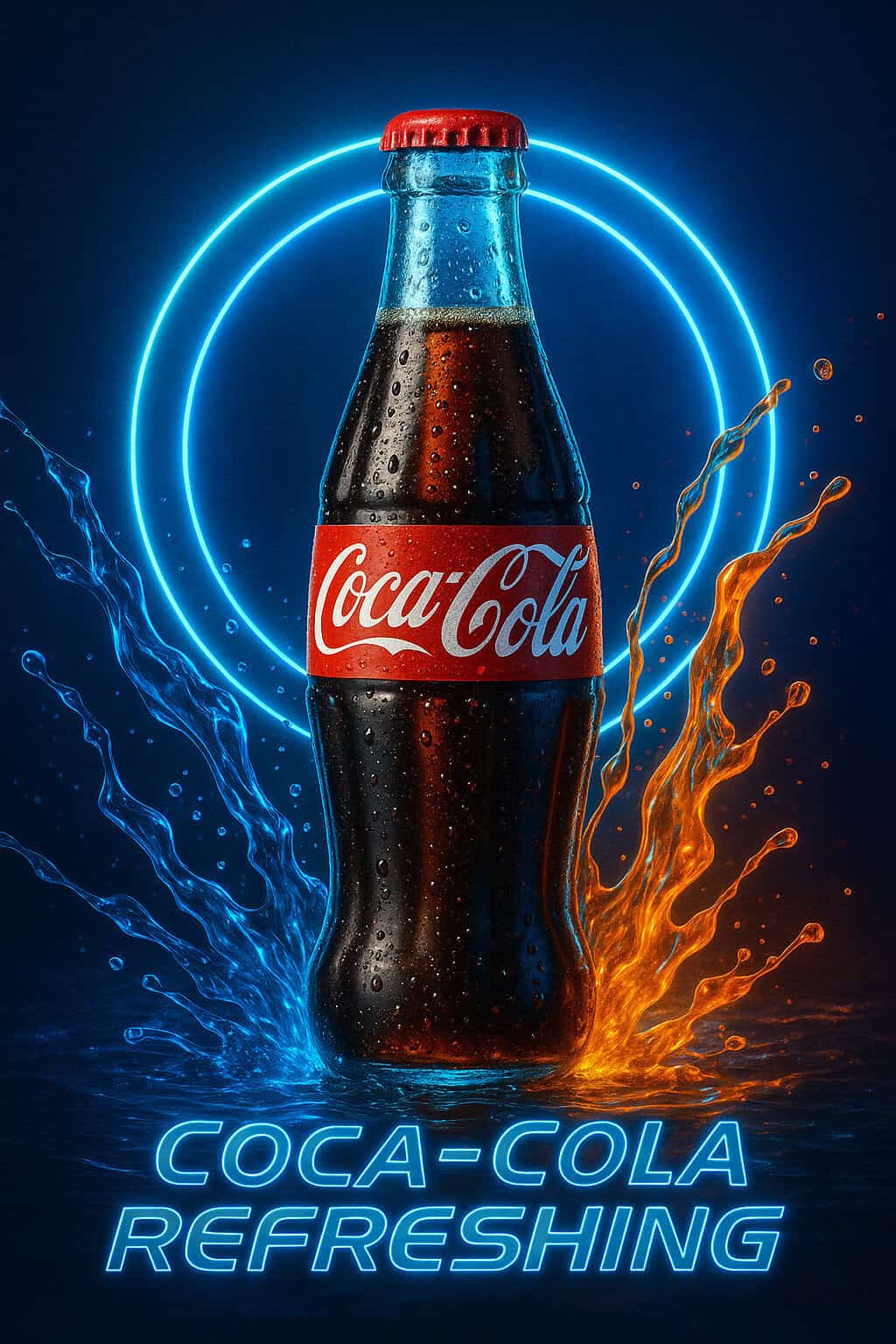A 500-person blind survey reveals AI visuals beating human ad creatives for Nike, Coca-Cola, and Bic
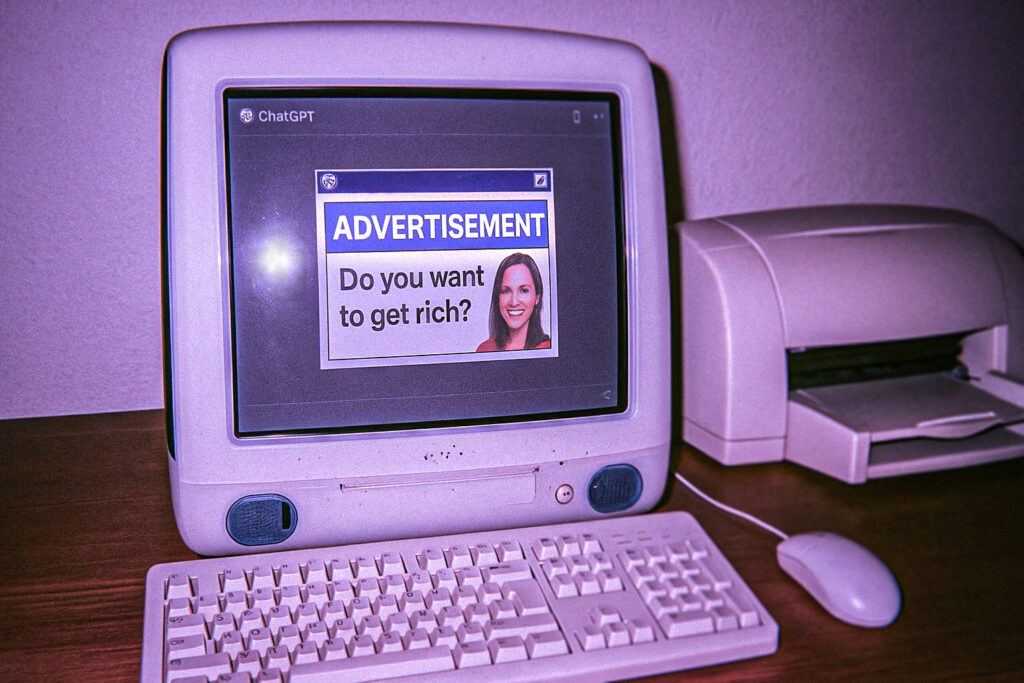
Do consumers actually prefer advertisements created by AI?
OpenAI’s new 4o image model launched last March. People using the new image generator praise it for its ability to produce accurate, high-quality, realistic images and graphics.
From the trending near-perfect replication of Studio Ghibli’s animation style, creating convincing fake receipts, and gaining recognition from creatives in the advertising industry, it’s safe to say OAI’s new image generator packs a powerful punch.
We found AI-made images online that were so striking, it made us wonder: would people prefer traditional advertisements or ones created by AI? To find out, we surveyed 500 consumers across the US.
Method at a glance:
- We deployed a five-question survey to 500 North Americans, aged 18 to 65.
- The first four questions each had two images, and respondents to choose which they preferred. One was AI-generated, while the other was not; however, respondents were not given any information on its provenance.
- Respondents chose the AI-generated advertisements ¾ of the time, with the non-AI (Goldeneye) creative only winning by 10%.
- The final question asked respondents to pick their favorite advertisement out of eight total choices (four AI and four non-AI).
- The most popular choices were all generated by AI.
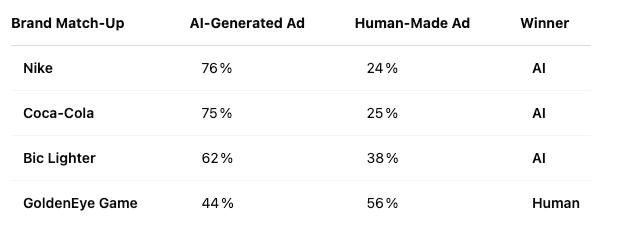
Survey Questions
Q1: Which Nike ad do you prefer?
| Real | AI-Generated |
 |  (Generated by ChatGPT 4o) |
| 23.55% (118) | 76.45% (383) |
Q2: Which Coca-Cola ad is better?
| Real | AI-Generated |
 |  |
| 25.15% (126) | 74.85% (375) |
Q3: Which game ad looks more authentic?
| Real | AI-Generated |
 |  |
| 55.49% (278) | 44.51% (223) |
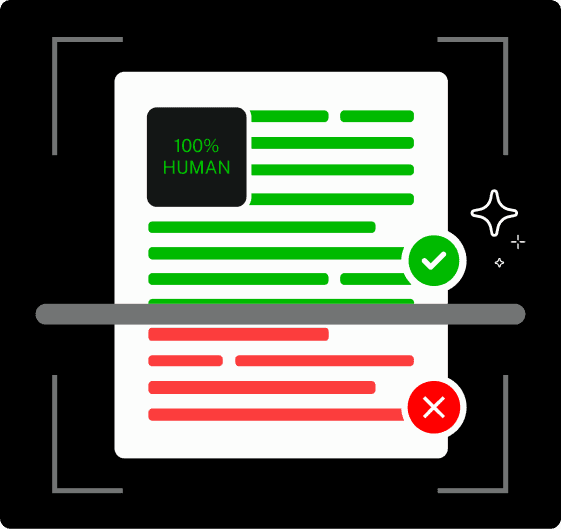
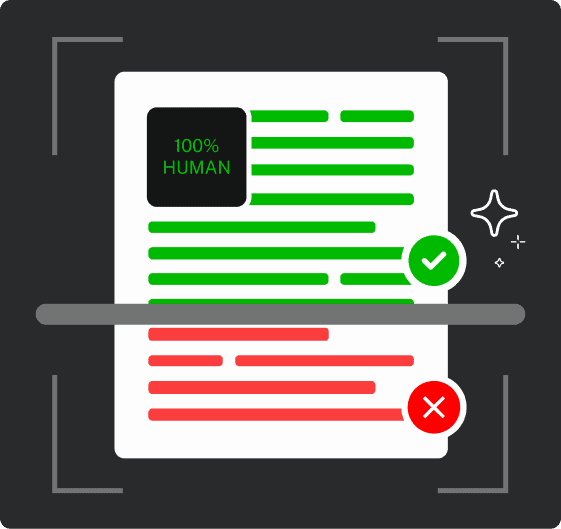
Never Worry About AI Detecting Your Texts Again. Undetectable AI Can Help You:
- Make your AI assisted writing appear human-like.
- Bypass all major AI detection tools with just one click.
- Use AI safely and confidently in school and work.
Q4: Which Bic lighter ad is the best?
| Real | AI-Generated |
 https://mir-s3-cdn-cf.behance.net/project_modules/hd/b9c6f3102972011.5f4307fbdbddb.png |  |
| 37.28% (189) | 62.28% (312) |
Q5: Out of all the ads, which one is your favorite?
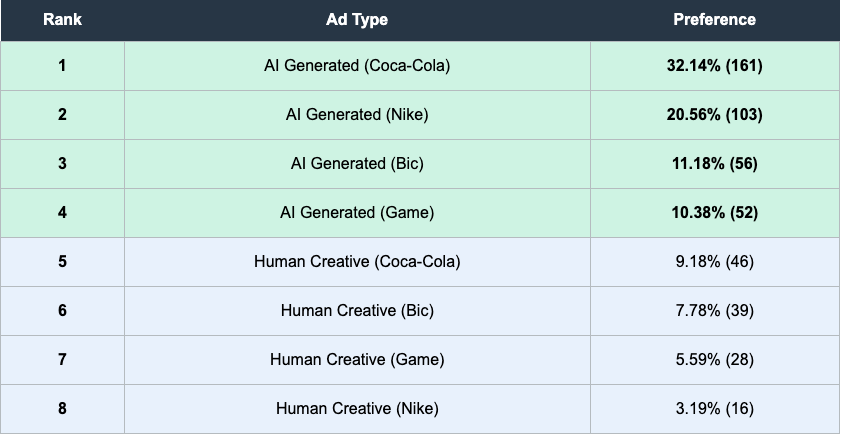
*Ranked in order of popularity*
| Rank | AD | Type | Preference |
| 1 |  | (AI Generated) | 32.14% (161) |
| 2 |  | (AI Generated) | 20.56% (103) |
| 3 |  | (AI Generated) | 11.18% (56) |
| 4 |  | (AI Generated) | 10.38% (52) |
| 5 |  | (Human Creative) | 9.18% (46) |
| 6 |  | (Human Creative) | 7.78% (39) |
| 7 |  | (Human Creative) | 5.59% (28) |
| 8 |  | (Human Creative) | 3.19% (103) |
Fair Use
You are welcome and encouraged to feature this data in a story or article. Please be sure to provide attribution to Undetectable AI and include a link to this page so readers can view the full report. For the full dataset from this survey, please contact [email protected]
Methodology
In April 2025, we deployed a survey to 500 North Americans aged 18 to 55. The participants were located across all 50 US states. The participants were not told anything about the origin or authenticity of the images. Instead, they were asked to choose which advertisement they preferred and were served two choices to pick from for the first four questions. Each choice featured an AI-generated ad creative and a human-created one. The fifth question asked participants to choose their favorite advertising creative across all the creatives.
Limitations
While AI-generated ads 1, 3, and 4 were just prompted, number 2 was a recreation of a human ad. Thus, it is essential to note that what survey respondents value here may indeed be rooted in human creativity and original thought. In relation to the images generated without using a reference photo, given that the AI image model used to create the media in this survey is trained on real images and photos, it’s still unclear whether AI is creating new things that are better or enhancing human creativity.
Conclusion: AI Has Won the Popularity Contest, But What Does It Mean?
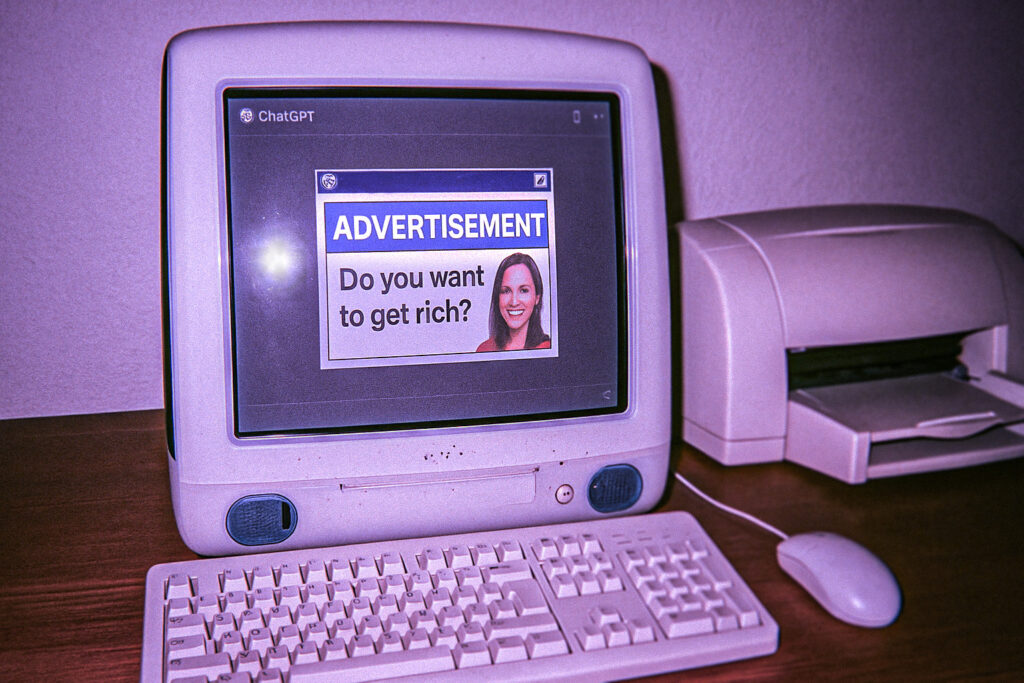
While the creative industry debates the soul of AI-generated art, our survey suggests consumers have already voted with their eyes.
This blind study revealed a stark preference for visuals created (or perhaps enhanced in some cases) by OpenAI’s latest model over established, human-led campaigns for some of the world’s biggest brands.
The survey data indicates that AI has mastered or at least mimicked an essential component of advertising: creating aesthetically pleasing and attention-grabbing imagery. However, it’s prudent to frame these findings with the right context.
This study measured immediate, instinctive visual appeal, not the full spectrum of a campaign’s effectiveness, which includes long-term brand building, storytelling, and emotional resonance.
The victory of the human-made Goldeneye ad, while slim, proves that nostalgia, iconic history, and specific cultural touchstones remain powerful territory for human creatives.
Indeed, one might argue that a good artist is not merely one who can copy a likeness or draw an image by hand. Rather, taste and creative direction play an equal, if not even larger role.
The challenge for marketing professionals is to redefine their value in an AI-augmented world. If a machine can consistently produce a more “likable” image, the human’s role must elevate to that of the master strategist, the brand steward, and the insightful curator who guides the tool.
The age of the human-only creative may be shifting, but the era of the human-led creative strategist has just begun.
